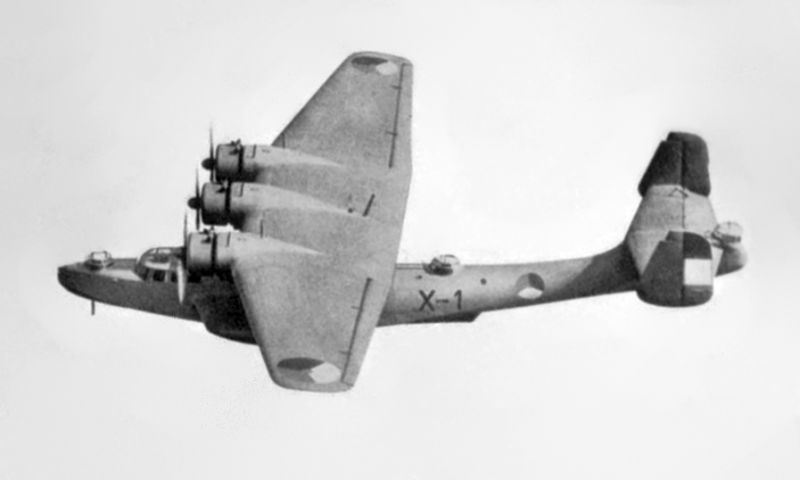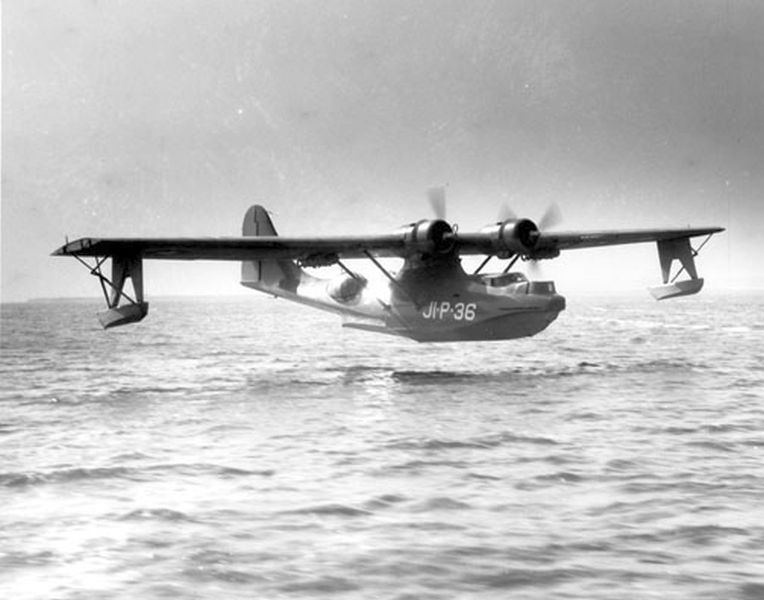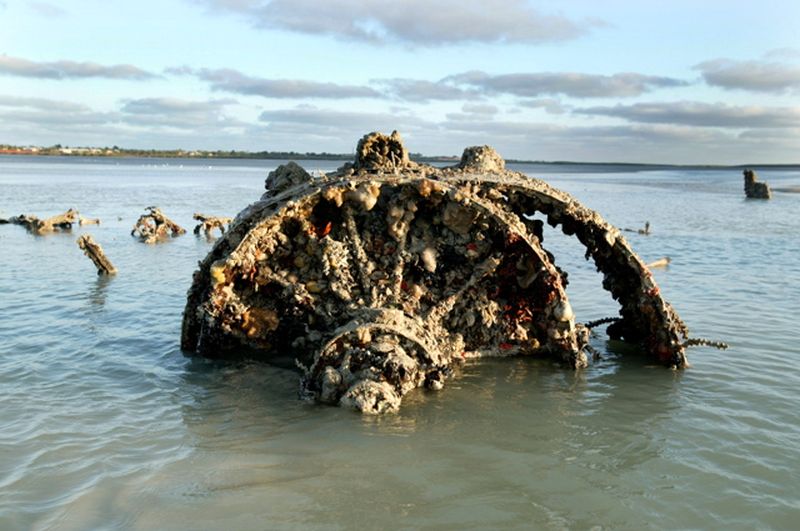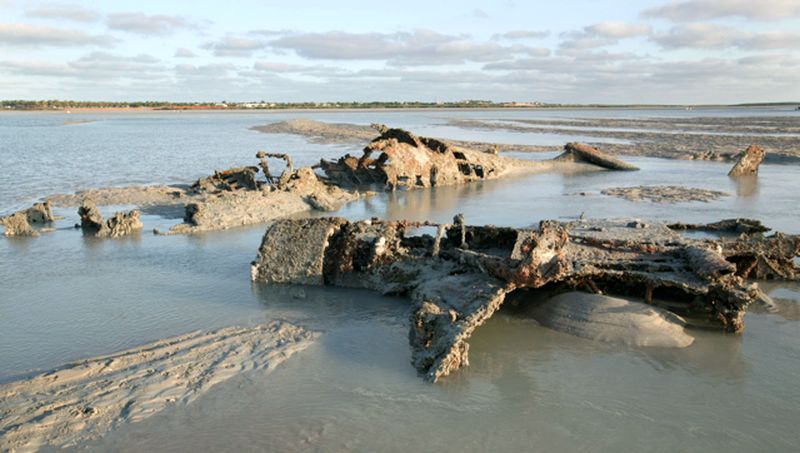Introduction
Following the Japanese air raid of 7th December 1941 on Pearl Harbor, World War Two also spread out into the Far East. During the first few months of 1942 the Japanese made swift advances throughout the southeastern part of Asia. The allies were unable to prevent the Imperial Japanese Army, capably supported by its air and naval forces, from occupying parts of China and the colonies of Europe and the United States. By the end of February 1942 it was anticipated that Japanese troops would overrun Java within a week. Japan wanted control of Java as well as the rest of the Dutch East-Indies to sustain its war effort, badly needing the oil that was being produced in the Dutch colony. Expectation turned to grim reality when, on the night of 28th February, during the Battle of the Java Sea the Royal Dutch Navy suffered its most grievous setback with the loss of Rear Admiral Karel Doorman and the sinking of his allied fleet. The destruction of the Netherland`s major warships included Doorman`s flagship, the light cruiser Hr. Ms. De Ruyter.
The navy commander in the Dutch Indies, Admiral Conrad Helfrich, gave orders to all available planes and ships, including those of American and British origin, to evacuate to Australia taking as much military personnel as possible with them. In a fourteen day period from the end of February until March 3rd, 8.000 mostly Dutch refugees, including women and children, were airlifted by a variety of aircraft from Java to Perth and Sydney via Broome in Western Australia. Thus a shuttle service was started between Java and Broome. On the busiest day fifty-seven planes landed on the small airstrip at Broome to refuel in the vast emptiness of the deserted northern part of Western Australia. American Lieutenant John Rouse said: “Broome looks like La Guardia Field at its busiest, the aerodrome is packed with aircraft”.
Broome was founded in 1883 as a pearling port on the north-western coast of Western Australia following to the presence of three excellent natural pearl beds. The pioneer John Forrest selected the place on Roebuck Bay just east of Dampier Creek and predicted this site would become the Capital of The Kimberley. Later that year, the town of Broome was declared and named after the colony`s Governor, Frederick N. Broome. The pearl fishing had its peaks in the eighties and nineties of the nineteenth century and the first two decades of the last century. On 8th December 1941 Australia declared war on Japan and almost immediately all pearling activity ceased in Broome. Most male residents joined the Australian military or became members of the local Volunteer Defence Corps. The Japanese residents were interred in camps and their pearling boats subject to confiscation as a precautary measure in the event of a possible Japanese invasion.
Broome`s aerodrome was nothing more than an unpaved landing strip and a suitable harbor for flying boats. But precisely because Broome had become a very important re-fuelling station on the route from East Asia to Perth, Melbourne and Sydney the Royal Australian Air Force (RAAF) upgraded the town`s aerodrome to accommodate the largest planes. They were assisted by American military personnel and employees of the Australian airline QANTAS. The landing strip was widened and a large petrol depot was established. All the necessary personnel, materials and fuel were flown in or brought in by ship.
Definitielijst
- cruiser
- A fast warship with 8,000 – 15,000 ton displacement, capable to perform multiple tasks such as reconnaissance, anti-aircraft defence and convoy protection.
- invasion
- Armed incursion.
- raid
- Fast military raid in enemy territory
Images
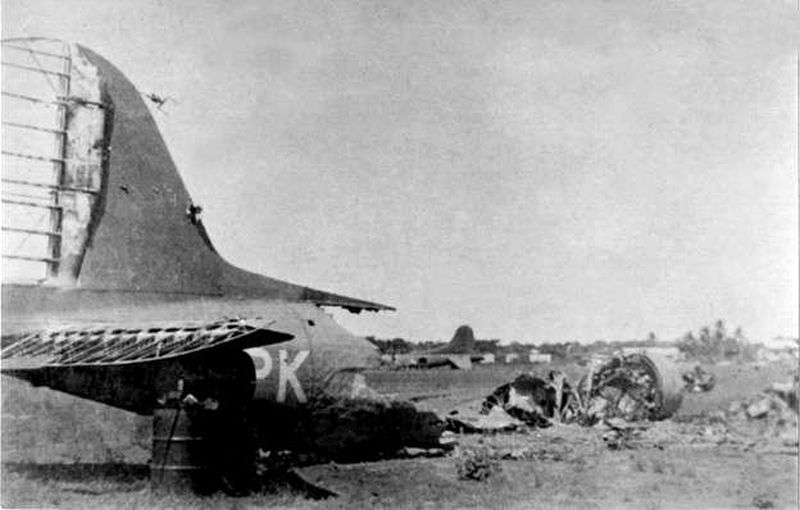 Remains of the Dutch DC3 Dakota at the Broome aerodrome, march 3rd 1942. Source: Australian War Memorial.
Remains of the Dutch DC3 Dakota at the Broome aerodrome, march 3rd 1942. Source: Australian War Memorial.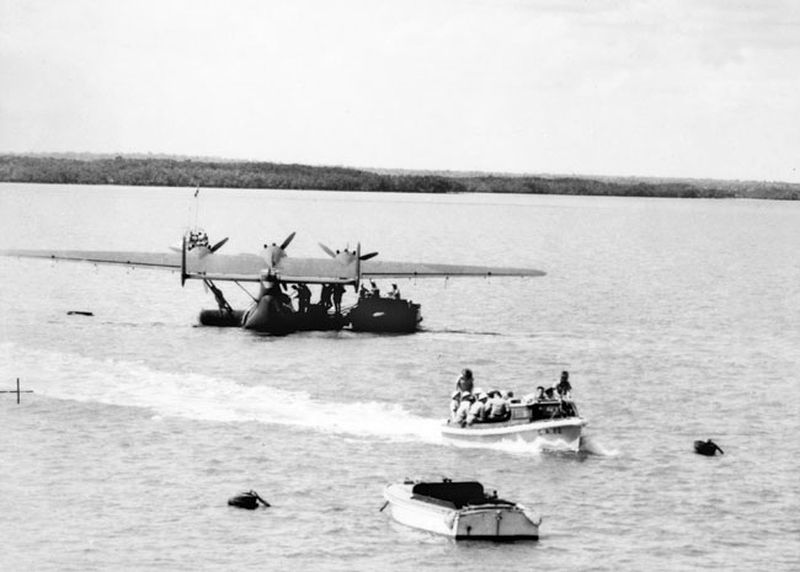 Dutch Dornier in Roebuck Bay, 1941. Source: Australian War Memorial.
Dutch Dornier in Roebuck Bay, 1941. Source: Australian War Memorial.The MLD in the Dutch East Indies
The ‘Marine Luchtvaartdienst (MLD)’, the Dutch naval air force, had two different types of flying boats at their disposal in the early forties. They had German manufactured Dornier Do 24s and Consolidated PBY Catalinas which were produced at Consolidated Aircraft in the United States. The Dorniers were mainly used as transports and for air reconnaissance. The Catalinas, or so-called Cats, were employed in more varied roles. They were also used for air reconnaissance, as bombers, for dropping magnetic mines or providing air cover for shipping. Though the Cats were rather slow, both types of planes were suitable for long distance flights.
After the capitulation of the Dutch East Indies, on March 8th 1942, many fleeing MLD personnel and other Dutch volunteers went on to join the Royal Air Force (RAF) or the Fleet Air Arm leading to the establishment of two Dutch squadrons. The 320 Dutch Squadron was part of the RAF and 860 Dutch Squadron belonged to the Fleet Air Arm. At first 320 squadron flew with Fokker T-8Ws, brought from the Netherlands and a few Avro Ansons. Later the group was equipped with American Lockheed Hudsons and B-25 Mitchell bombers. 860 squadron served with British Fairy Swordfish bi-planes on the Dutch auxiliary carriers Hr. Ms. Macoma and Hr. Ms. Gadila.
The very few MLD Catalina flying boats that did survive the beginning of the war, for the remainder of the duration flew on assignments from Australia and Colombo, in what was then Ceylon, now Sri Lanka.
Definitielijst
- capitulation
- Agreement between fighting parties concerning the surrender of a country or an army.
- RAF
- Royal Air Force. British air force
- Squadron
- A military unit in the Belgian navy usually six to eight small ships operating together under one command. The smallest military unit in the Dutch air force of about 350 men. In most countries is the designation of a military unit thesize of a company. It is either an independent unit, such as a battery, or part of a bigger Calvary unit. In the air force it is the designation of a unit of aircrafts.
Images
Prior to the air raid
After the Japanese advance in the northern part of the Dutch East Indies most flying boats of the MLD were stationed in secret locations in East Java. From there they flew many reconnaissance and evacuation flights during the last days of February 1942. Early on the morning of March 2nd a number of flying boats had to take refugees on board again and evacuate them to Australia. Most refugees were family members of navy personnel, many of whom were children.
As many passengers as possible were taken on board and, with full fuel tanks, they took off to Broome. The packed flying boats could just reach Broome with the maximum amount of fuel only after a long and exhausting flight (it took the Catalinas fourteen hours). During the flight the refugees were packed, sometimes up to forty evacuees, in the very uncomfortable aircraft. Except for the crew members there were no seats and the refugees had to sit on the wooden floor or lean against the plane wall.
The small airstrip near Kupang, the capital of Dutch Timor situated at the extreme south western part of the island, fell into Japanese hands with the occupation of the island following military invasion on February 19th 1942. Broome was now within flying distance for Japanese fighter planes. The commander of the Japanese Fleet Air Arm on Timor, Colonel Takeo Shibata, dispatched a Kawanishi H6K reconnaissance flying boat to Broome, on March 2nd. He wanted to know why there was so many radio traffic coming from the Australian pearl town. This aircraft was spotted over Broome at an altitude of 4,000 meters that day. At that moment there were eight large planes present at the aerodrome.
Also at that moment Roebuck Bay still lay empty. Minutes later US Navy pilot Lieutenant J. Lamade landed his Scout Observation Curtiss Seagull seaplane, which came from the American cruiser USS Houston, in the bay and docked at the pier. The first three Dutch Dorniers, X3, X23 and X28, landed in the twilight of that evening. Almost at the same time two Australian Empire flying boats landed in the bay. One of them belonged to the Royal Australian Air Force (RAAF) and the other one flew for QANTAS. Two Catalinas of the US Navy arrived at night and four Dutch Cats, Y59, Y60. Y67 and Y70 called in between half past six and half past eight the next morning. The last two Dorniers, X1 and X20, arrived at approximately nine o`clock in the bay near Broome. Due to the low state of the tide they were obliged awaiting the fuel boat a considerable distance offshore. That same morning, the two RAF Catalinas, FV-N and FV-W arrived from Tjilatjap, Java.
Definitielijst
- cruiser
- A fast warship with 8,000 – 15,000 ton displacement, capable to perform multiple tasks such as reconnaissance, anti-aircraft defence and convoy protection.
- invasion
- Armed incursion.
- RAF
- Royal Air Force. British air force
Images
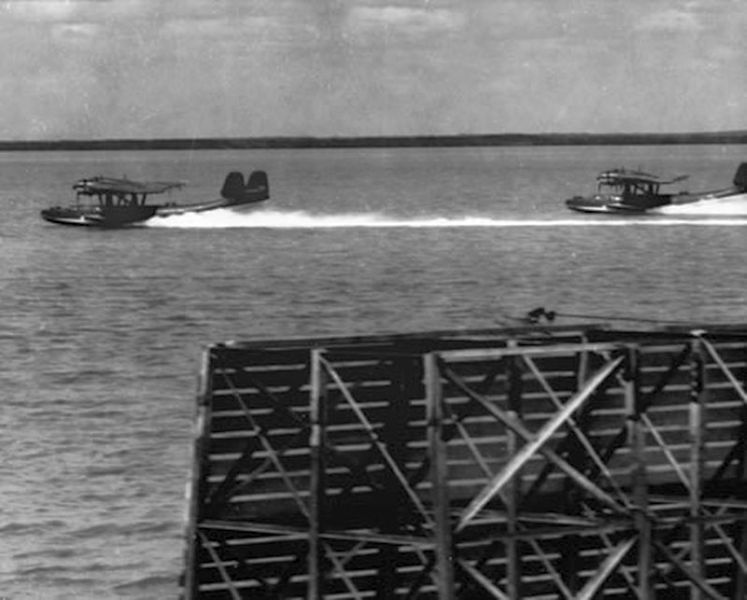 Dornier Do 24 flying boats landing in Roebuck Bay, Broome. Source: Australian War Memorial.
Dornier Do 24 flying boats landing in Roebuck Bay, Broome. Source: Australian War Memorial.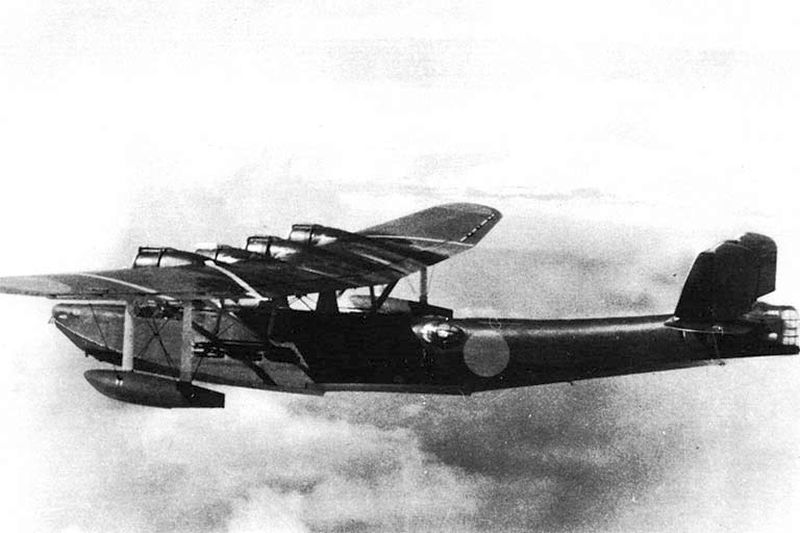 A Japanese Kawanishi H6K flying boat. Source: Wikipedia.
A Japanese Kawanishi H6K flying boat. Source: Wikipedia.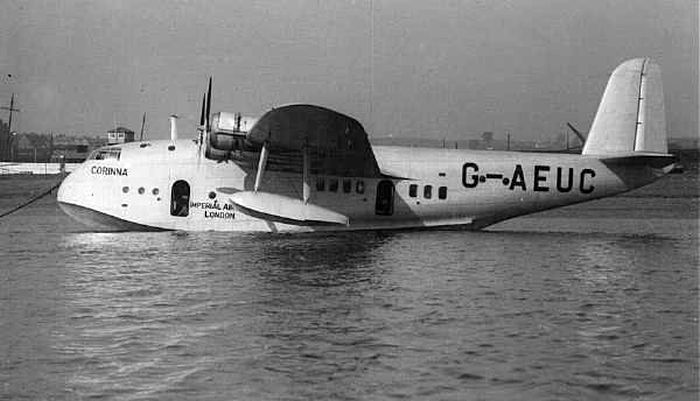 QANTAS Empire Flying Boat 'Corinna'. Source: Strijdbewijs.
QANTAS Empire Flying Boat 'Corinna'. Source: Strijdbewijs.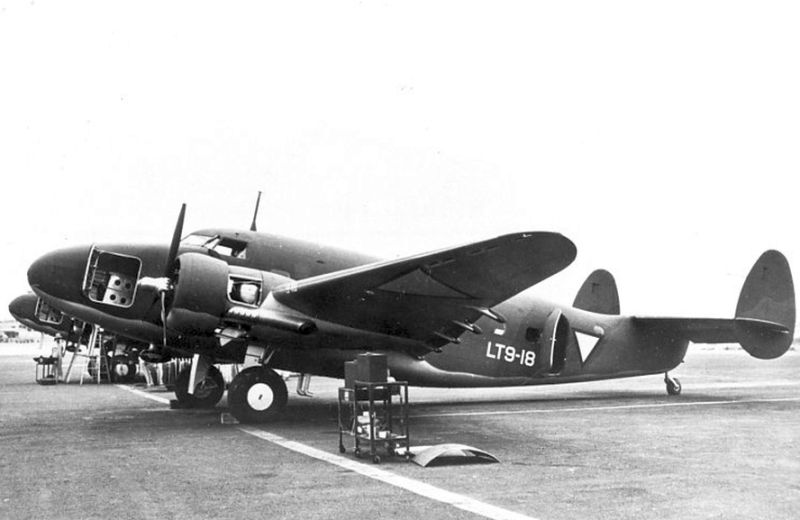 The Lockheed Lodestar LT 918 before the Second World War. Source: Airwork.
The Lockheed Lodestar LT 918 before the Second World War. Source: Airwork.The air raid
As usual, the morning of March 3rd 1942 in Broome was the beginning of a sunny and warm day. While the crews of the flying boats were busy making arrangements to refuel and taking on supplies, most refugees sat out on the wings of the aircraft which were moored on buoys in the bay. After the long flight, they were able to get some fresh air before the flying boats would continue their onward journeys. Feeling that they were now so far outside the current theatre of operations for the Japanese having already arrived in Australia they felt relatively safe.
Suddenly, just before half past nine, nine Mitsubishi A6M Zero fighter planes and a Mitsubishi C5M command reconnaissance plane appeared over Broome and Roebuck Bay. Aided by jettison fuel tanks carrying an additional 320 litres of fuel, the Australian harbor town had fallen within two and a half hours` reach of the Japanese fighters from Timor. To his great surprise, the commanding officer of the fighter formation, Lieutenant Zenziro Miyano, saw fifteen large flying boats moored in Roebuck Bay. The allied aircraft had not been reported to Miyano, but immediately he directed three of the Zero`s to attack them. The next three Zeros were given the order to attack the Broome aerodrome and the last three maintained higher altitude to cover the attack.
The flying boats in the bay were riddled with 7.7mm and 20mm bullets from the Japanese fighter planes. The two large Australian Empire Flying Boats were the first to be hit. Immediately, there was panic with most refugees and crew members throwing themselves into the water. A number of them were shot directly by the Japanese pilots while two Catalinas sank immediately. Other flying boats caught fire. The survivors of the first attack wave tried to swim to shore, but against the falling tide it was almost impossible due to the strength of the current (It was approaching low tide and Roebuck Bay is notorious for its enormous tidal range). The fuel that poured out of the stricken aircraft caught fire instantly and caused a sea of fire. Though this inferno, survivors attempted to rescue refugees that were trapped in the burning and sinking wrecks. In the following attack waves of the three Zeros the drowning survivors dived, some of them taking babies and toddlers with them in an effort to escape from the hail of bullets. The attacks persisted for about twenty minutes by the end of which all flying boats were sunk or on fire. The survivors were rescued with small boats, most of them suffering from shot wounds or covered in burning injuries.
In the absence of allied fighters anticipated to respond to the raid by the Japanese fighter planes, the three Zeros that had remained at altitude to provide cover also joined the attack, led by Leiutenant Miyano. One of the American B-24 Liberator bombers had just taken off from the airstrip and was flying over the beach when it was hit by 20mm bullets. The aircraft had 33 sick and wounded American and British soldiers on board and was en route from Java to Perth. The American bomber crashed into the sea about ten miles off the coast breaking in two, killing nineteen men instantly. Of the survivors only two persons managed to swim to shore but only one of them survived. The others drowned when the Liberator sank.
At first, the Japanese fighter pilot to whom the B-24 Liberator fell victim had been chasing the Curtiss SOC Seagull of Lieutenant J. Lamade, who, in the confusion of the attack had seized the opportunity to take off. When the Zero-pilot saw the much bigger target he interrupted the chase so the little seaplane could escape to Port Hedland.
The seven allied aircraft present at the aerodrome were all destroyed including two B-17 Flying Fortresses, another B-24 Liberator, two Lockheed Hudson bombers, a Lockheed Lodestar LT-918 of the Royal Netherlands East Indies Army Air Force and a DC-3 Dakota of the Royal Netherlands East Indies Airline which had all been used to evacuate military personnel. At the attacks on the planes at the airfield nobody was hurt because all crewmembers and evacuees found shelter in ditches and in the long grass just outside the aerodrome. The pilot of the Lockheed Lodestar, Dutch Lieutenant Gus Winckel, saw the Japanese fighters coming and took a Colt 7.9mm machinegun out of his plane. Using the weapon, he shot the Zero of Lieutenant Asamu Kudo, succeeding in hitting it, but burning his arm and hand on the gun`s glowing hot barrel. The Japanese plane crashed into the sea killing the pilot. For this heroic act, Winckel was decorated with the Bronze Cross with honorable mention by the Dutch government.
The remaining eight Zeros flew away after about twenty minutes, with their cockpits open, leaving behind a scene of total chaos: burning planes, vehicles and buildings, and survivors struggling to hold onto life. A number of refugees and crew members in the water were killed by sharks or the treacherous currents with hours passing before it was possible for the last survivors in the bay to be picked up and saved.
Definitielijst
- raid
- Fast military raid in enemy territory
Images
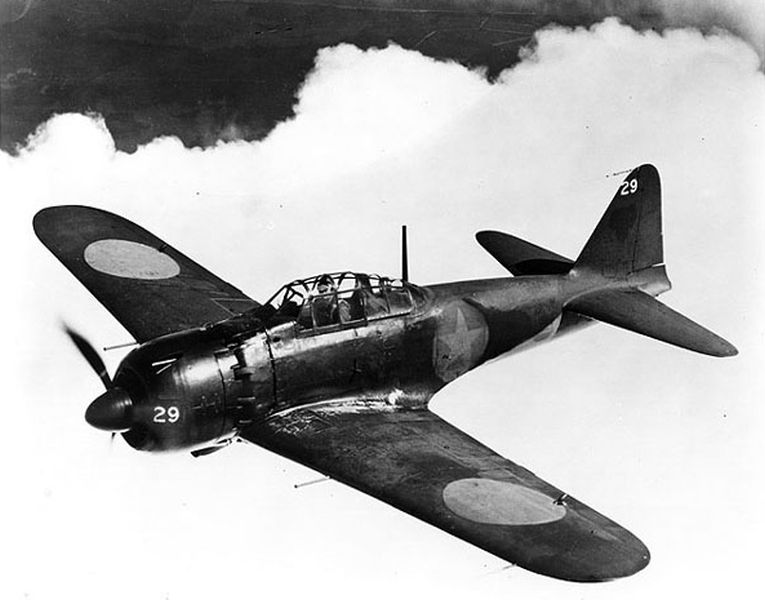 Japanese Mitsubischi A6M Zero fighter plane. Source: Centennialofflight.
Japanese Mitsubischi A6M Zero fighter plane. Source: Centennialofflight.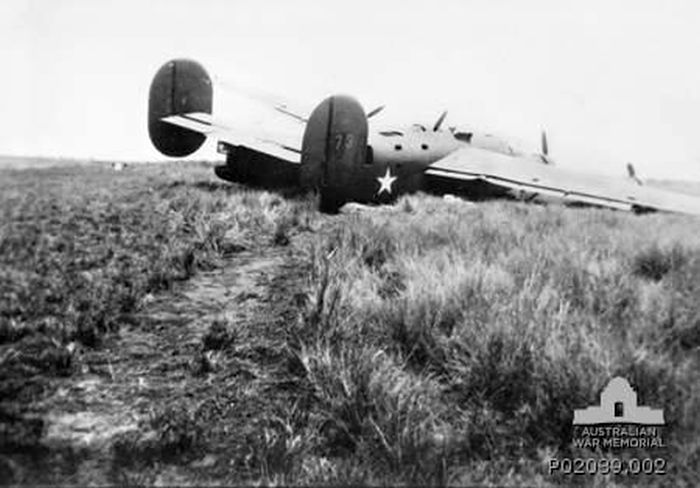 Wreck of an American B24 Liberator bomber after the air raid. Source: Australian War Memorial.
Wreck of an American B24 Liberator bomber after the air raid. Source: Australian War Memorial.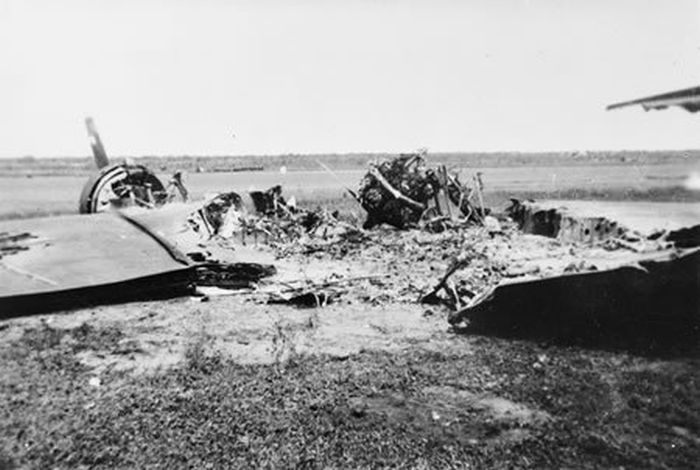 The burned remains of the DC-3, PK-ALO. Source: The Australian War Memorial.
The burned remains of the DC-3, PK-ALO. Source: The Australian War Memorial.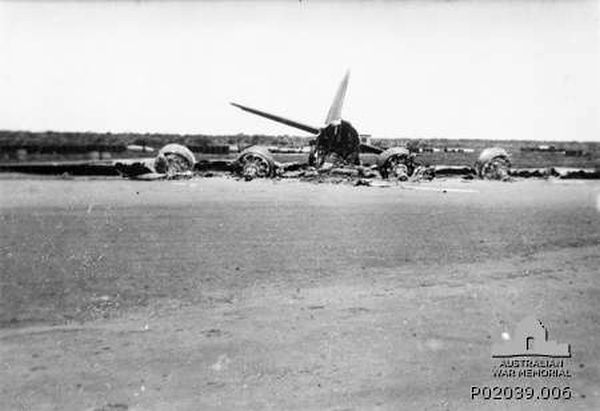 Wreck of a B17 Flying Fortress. Source: Australian War Memorial.
Wreck of a B17 Flying Fortress. Source: Australian War Memorial.The Dutch Dakota 'Pelikaan'
Early on the morning of march 3rd, at 1:15 a.m., the Dutch DC-3 Dakota ‘Pelikaan’ of the Royal Netherlands East Indies Airline took off from Bandoeng, Java, heading for Australia. For the commander of the plane Captain Ivan Smirnoff, a naturalized Dutchman of Russian birth, this was just one of many flights evacuating Dutch military personnel and their families. In addition to his three crew members, he had on board eight passengers including a woman and her twelve month old baby. As usual, there was a planned stop in Broome to refuel. Later that morning the aircraft was just 80 kilometers north of the pearling town when Captain Smirnoff and his crew saw big black columns of smoke in the distance. Moments later the Dutch aircraft was attacked by a number of the Zero`s returning from the Broome air raid.
The Dakota was attacked on the port side, wounding Captain Smirnoff. A number of evacuees were also hit by Japanese bullets as the stricken portside engine caught fire. In spite of being injured, Smirnoff successfully escaped from the Japanese attack by a superbly executed nosedive, finally crash landing on the shoreline of the Indian Ocean near Carnot Bay, about sixty kilometres north of Broome, extinguishing the engine fire.
The stranded Dakota was fired upon several more times by the Japanese fighter planes before they disappeared, causing more wounded. The Zeros probably stopped the attack because they needed the remaining fuel to reach Kupang. Captain Smirnoff sent out two soldiers to look for help. An Aboriginal Australian, who had witnessed the crash landing of the Dakota, raised the alarm at the Beagle Bay Mission, situated forty kilometres northeast of Carnot Bay. A group of rescuers set out, consisting of none other than two German(!) missionaries, an Australian soldier and two Indigenous Australians and, after a few days, they met the two Dutch servicemen dispatched by Captain Smirnoff. Meanwhile, at the wreck of the Dutch aircraft, the survivors had made a shelter from parachutes. Nevertheless, four of the wounded died including the woman and her baby. On March 7th, at 3:00 a.m., the rescuers reached the scene of the crash and all the survivors walked the forty kilometres to the Beagle Bay Mission. From there they were brought to Broome by truck.
Definitielijst
- raid
- Fast military raid in enemy territory
Images
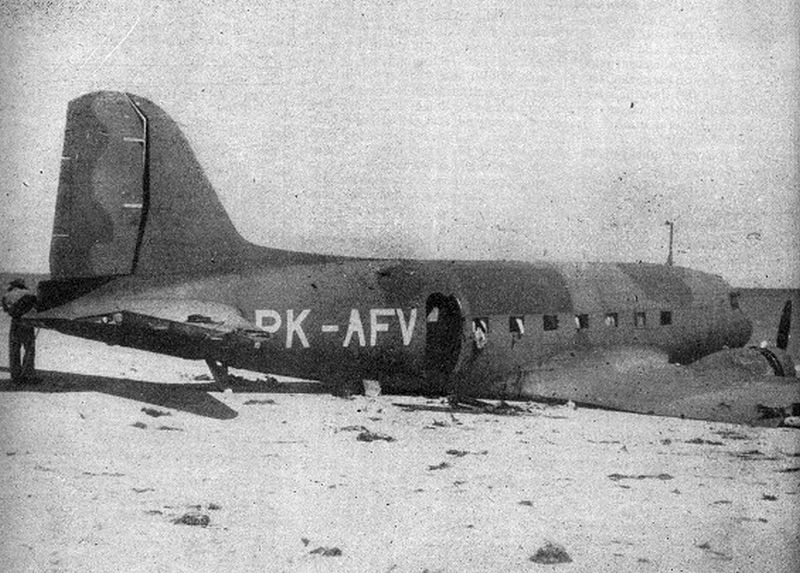 Wreck of the Dutch DC3 Dakota 'Pelikaan'. Source: Pacific Wrecks.
Wreck of the Dutch DC3 Dakota 'Pelikaan'. Source: Pacific Wrecks.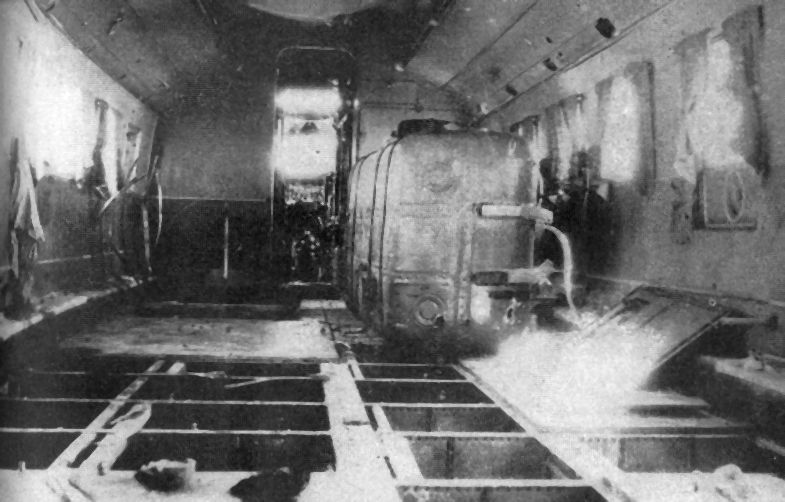 Interior of the wrecked 'Pelikaan'. Source: Pacific Wrecks.
Interior of the wrecked 'Pelikaan'. Source: Pacific Wrecks.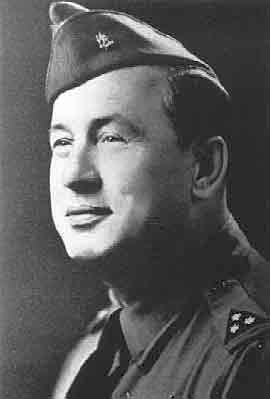 Captain Ivan Smirnoff. Source: Pacific Wrecks.
Captain Ivan Smirnoff. Source: Pacific Wrecks.Conclusion
The Japanese air raid on Broome caused a total number of almost one hundred casualties. Of these forty-eight were of Dutch descent including thirty-two women and children. A total of twenty-five bodies was never recovered. One of the Dutch victims was the widow of the commanding officer of Hr. Ms. De Ruyter, kapitein-luitenant-ter-zee Lacomblé, L.E. Lacomblé-Silvergieter Hoogstad.
Most of the nineteen wounded were airlifted to Port Hedland and Perth in aircraft that arrived in Broome after the attack. The remaining survivors were brought to Fremantle on board confiscated Japanese pearling luggers, two days later.
The Japanese regarded the air raid on Broome as a legitimate attack on military targets. Unaware that most flying boats had large numbers of refugees on board (although they could have seen them during the attack) the pilots had strict orders to attack only military targets and to spare the town of Broome.
Just before the Japanese fighter planes reached Kupang, one of the returning Zeros ran into trouble. Damaged and running out of fuel the Zero ditched into the sea near Roti Island, at the extreme southwest point of Timor. The pilot had to swim for two hours to reach the shore.
Although Broome was attacked three more times by Japanese aircraft after the air raid on March 3rd 1942, the number of casualties and the amount of damage was never again as large. On March 20th 1942, Mitsubishi G4M heavy bombers attacked the Royal Australian Air Force Base in Broome and caused one civilian victim. The next air raid was in August 1942 but had few consequences. The final Japanese attack on Broome took place in August 1943 but inflicted almost no damage and resulted in no further victims.
Today, remains of the flying boats on the seabed of Roebuck Bay and of the Dutch Dakota ‘Pelikaan’ are still visible when the tide is extremely low.
Definitielijst
- raid
- Fast military raid in enemy territory
Images
Information
- Article by:
- Peter Kimenai
- Translated by:
- Peter Kimenai
- Published on:
- 05-09-2012
- Last edit on:
- 30-09-2024
- Feedback?
- Send it!
